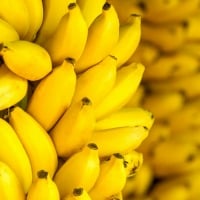According to the World Health Organization, more than one billion people throughout the world are living with hypertension. Hypertension is responsible for at least 45 percent of deaths due to heart disease and 51 percent of deaths due to stroke.
Researchers in a study conducted by the Keck School of Medicine at the University of Southern California reported that a higher intake of dietary potassium can aid in lowering blood pressure and that the kidneys excrete more water and salt when the dietary potassium level in the blood is high. Eating a high potassium diet can be likened to taking a diuretic. Also explored was the link between potassium, dietary sodium, blood pressure, and the sodium-potassium ratio and an investigation regarding the effects of potassium and dietary sodium on hypertension.
Alicia McDonough, Ph.D., professor of cell and neurobiology cell at the Keck School, stated that evidence in their analysis suggests that increasing dietary potassium may have an equally important effect and a direct benefit of lowering hypertension.
There are many nutritious foods that are rich in potassium, a valuable mineral and salt that aids with electrolyte balance and in numerous cardiac functions. Also, without it, your body’s vital energy processes are not able to occur.
Here are some of the examples of potassium-rich foods.
Banana
Considered a traditional potassium fruit, a medium-sized banana offers about 15 percent of the daily requirements and can be added to other foods such as salads, cereal, jello, puddings, smoothies, and more.
Yogurt
Yogurt itself is one of the best suggestions for a part of a healthy breakfast, as a midday snack, or as a full meal especially with a variety of fresh fruits added. A 100-gram serving offers more than 250 milligrams of potassium.
Apricots
The apricot is tasty and is high in antioxidants including vitamins A and C as well as potassium. A 100-gram serving is about seven percent of the daily needs, is low on the glycemic index, and is an ideal quick snack.
Acorn Squash
It is loaded with potassium, with a 100-gram serving having over 400 mg of potassium. You can bake it with brown sugar and cinnamon for a side dish or make it stuffed with a favorite meat for a complete meal.
Avocado
The avocado has an abundant amount of omega-3 fatty acids, maintains the electrolyte balance, is a filling treat as a snack or added to a salad or smoothie, and has close to 1,000 milligrams of potassium per serving.
Potato
One cup (173 grams) is loaded with nearly 30 percent of the daily requirements for potassium. It is best to enjoy the potato boiled, baked, or grilled and avoid fried versions.
Fresh Salmon
Salmon is one of the healthiest foods and best meat sources as it is also one of the best sources of omega-3 fatty acids. A small three-ounce serving also contains over 500 milligrams of potassium.
Almonds
Almonds are high in fiber, low on the glycemic index, and help maintain glucose levels and the electrolyte balance. A serving of 28 grams contains about 200 milligrams of potassium and no sodium. However, snack on just a small amount because that serving contains close to 200 calories.
The ability of one’s body to have control of the blood’s potassium levels is critical to normal heart, muscle, and nerve functions. Since a typical Western diet consists of low potassium and high sodium foods, the body uses the retention of sodium to hold onto that potassium. That is similar to eating a diet high in sodium, which could significantly increase the hypertension risk.




